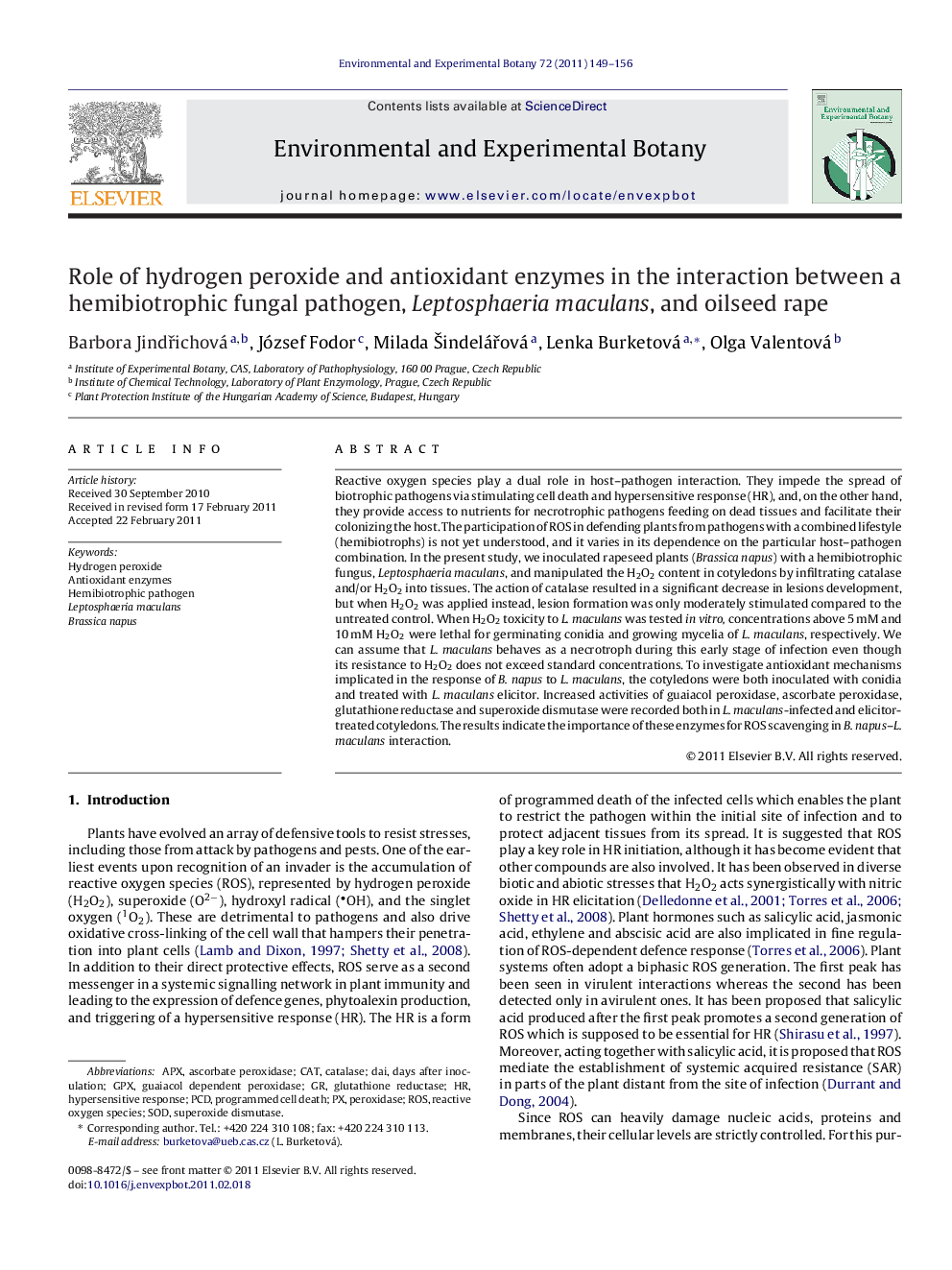| کد مقاله | کد نشریه | سال انتشار | مقاله انگلیسی | نسخه تمام متن |
|---|---|---|---|---|
| 4554760 | 1329228 | 2011 | 8 صفحه PDF | دانلود رایگان |

Reactive oxygen species play a dual role in host–pathogen interaction. They impede the spread of biotrophic pathogens via stimulating cell death and hypersensitive response (HR), and, on the other hand, they provide access to nutrients for necrotrophic pathogens feeding on dead tissues and facilitate their colonizing the host. The participation of ROS in defending plants from pathogens with a combined lifestyle (hemibiotrophs) is not yet understood, and it varies in its dependence on the particular host–pathogen combination. In the present study, we inoculated rapeseed plants (Brassica napus) with a hemibiotrophic fungus, Leptosphaeria maculans, and manipulated the H2O2 content in cotyledons by infiltrating catalase and/or H2O2 into tissues. The action of catalase resulted in a significant decrease in lesions development, but when H2O2 was applied instead, lesion formation was only moderately stimulated compared to the untreated control. When H2O2 toxicity to L. maculans was tested in vitro, concentrations above 5 mM and 10 mM H2O2 were lethal for germinating conidia and growing mycelia of L. maculans, respectively. We can assume that L. maculans behaves as a necrotroph during this early stage of infection even though its resistance to H2O2 does not exceed standard concentrations. To investigate antioxidant mechanisms implicated in the response of B. napus to L. maculans, the cotyledons were both inoculated with conidia and treated with L. maculans elicitor. Increased activities of guaiacol peroxidase, ascorbate peroxidase, glutathione reductase and superoxide dismutase were recorded both in L. maculans-infected and elicitor-treated cotyledons. The results indicate the importance of these enzymes for ROS scavenging in B. napus–L. maculans interaction.
► Hydrogen peroxide elevates in response to Leptosphaeria maculans in oilseed rape.
► Infiltration of catalase decreases symptoms of L. maculans on cotyledons.
► L. maculans infection and L. maculans-produced elicitor activate antioxidant mechanisms.
Journal: Environmental and Experimental Botany - Volume 72, Issue 2, September 2011, Pages 149–156